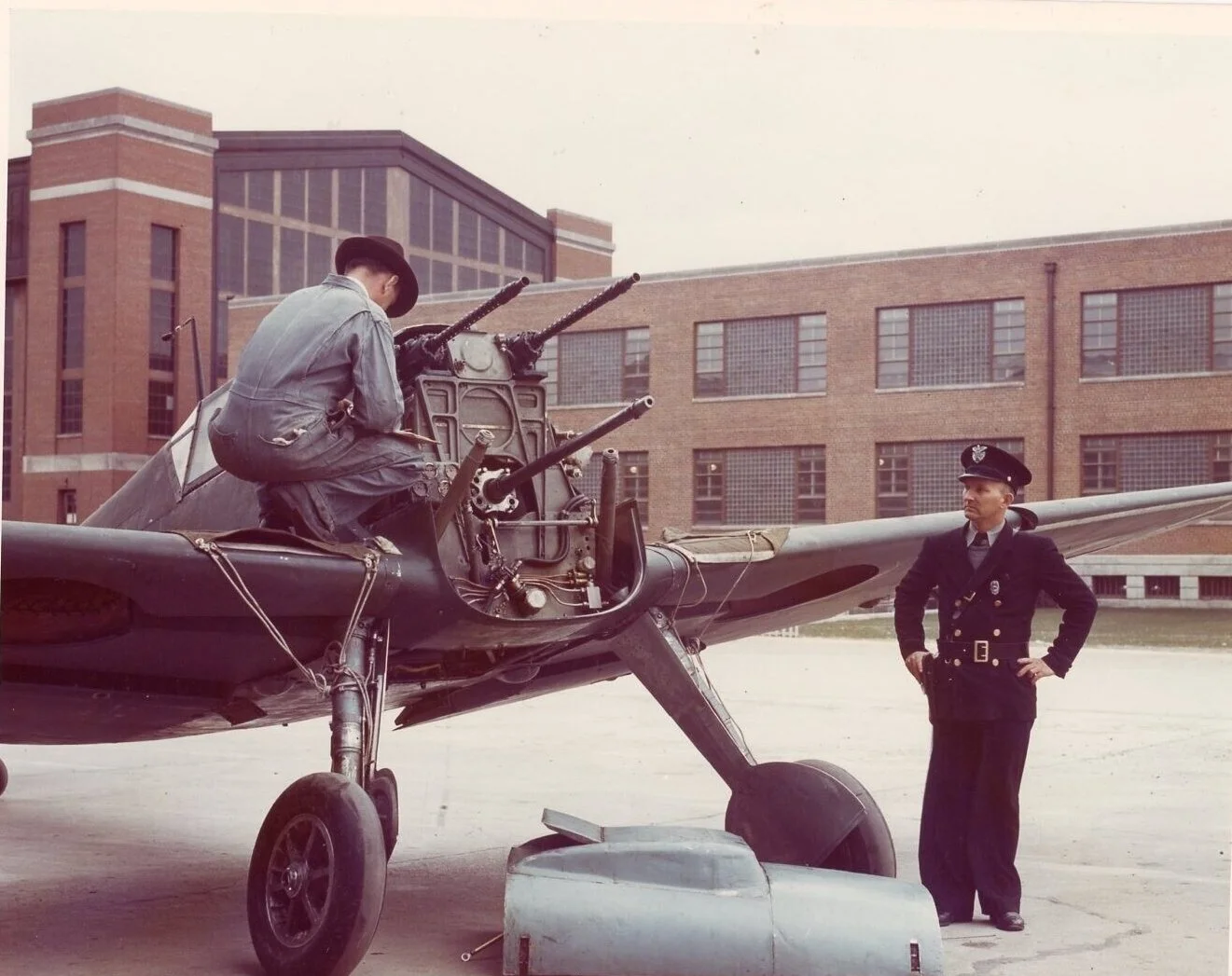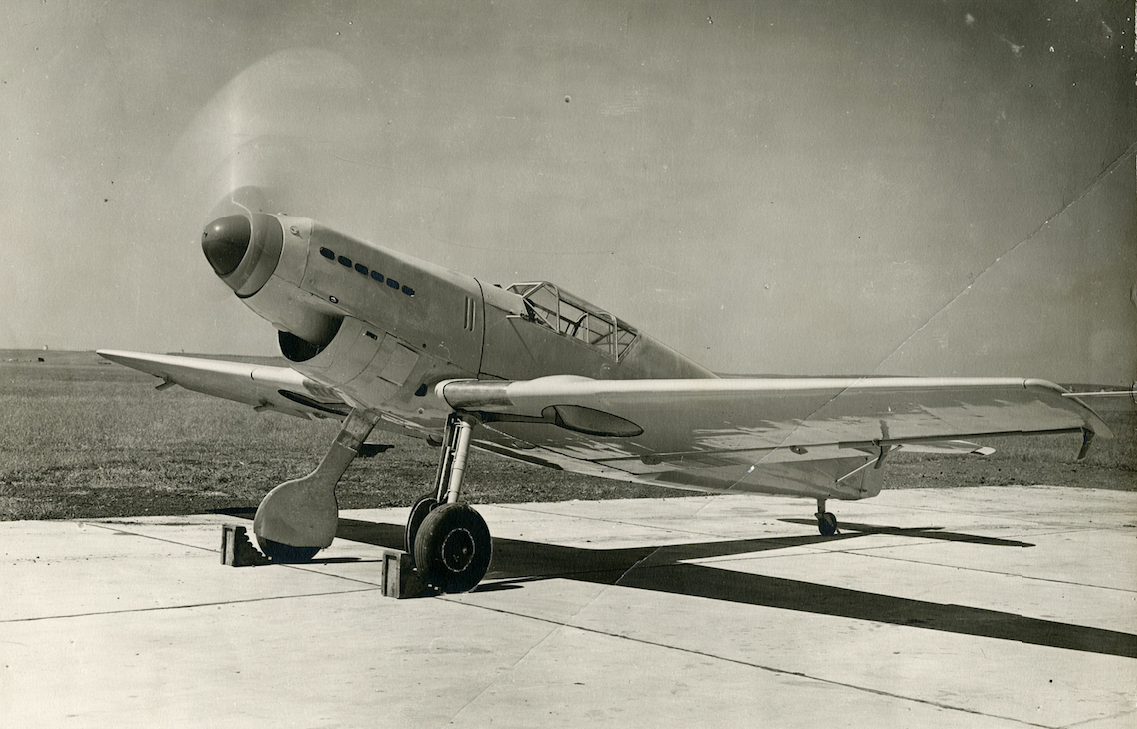
How Did the Bf 109 Nose Cannon Work?
The Bf 109 was famously fitted with a nose cannon that fired right through the propeller spinner, but how does this well known, but often misunderstood system work? And why was it used?
As the most produced fighter ever, the Bf 109’s appearance is familiar even with those who have a minimal interest in aviation. One of its standout features is, of course, the large opening in the propeller spinner that housed the barrel of a powerful cannon.
The reasoning behind this interesting design choice is one of necessity and practicality
The Nose Cannon
As mentioned, the Bf 109 is the most produced fighter in history, with over 34,000 units being built in total. As such, its armament varies greatly, from rather minimal on some variants, to heavy weapons packages specifically designed to bring down bombers on others.
But regardless of the type, all featured the centrally mounted nose cannon, firing through the propeller hub.
The requirements that led to the Bf 109 were published in 1933, with major German manufacturers competing against each other to produce an aircraft that most optimally fulfilled them.
 Bf 109 V1 prototype, which was powered by a Rolls-Royce Kestrel engine, indicated by the exhaust ports. Image by National Air and Space Museum.
Bf 109 V1 prototype, which was powered by a Rolls-Royce Kestrel engine, indicated by the exhaust ports. Image by National Air and Space Museum.
From the start, Messerschmitt’s proposal, known then as P.1034, was to be armed with two 7.92 mm machine guns forward of the cockpit and above the engine. This was a hang-over from First World War-era designs, and the guns had to be synchronised to fire through the propeller.
This arrangement kept the guns out of the wings, bringing in the center of gravity and allowing the wings to be made thin and light for improved performance and reduced drag. In short, the Bf 109 was not originally intended to have any weapons mounted in the wings.
P.1034 was replacing biplanes that only flew around 200 mph with relatively light armaments, so this was deemed acceptable at the time.
 An MG 151, the same type used in the Bf 109’s nose.
An MG 151, the same type used in the Bf 109’s nose.
However as the 1930s progressed, other aircraft around the world began mounting large assortments of weapons in the wings. The French Dewoitine D.520 for example, carried four machine guns in the wings, while the British Spitfire carried eight.
Seeing that their aircraft was going to be at a firepower disadvantage, Messerschmitt needed to add more guns to their Bf 109.
As the wings were designed without space for guns, a gun was instead placed in the engine, firing through a hollow propeller hub – this was known as a “motorkanone”. Initially this was a 20 mm, but some later variants carried a 30 mm nose cannon here. Plans for this had been considered early on, so this wasn’t too difficult to add.
A Bf 109 with its nose cone missing. This gives a good view of the cannon’s opening.
Even more firepower was eventually needed, forcing Messerschmitt to make space in the wings for extra guns. There was only room for one gun in each wing though, and only with ammunition belts extending throughout the wings as there was no space for magazines.
The guns above the nose were also replaced with 13 mm machine guns in some variants too, totalling three weapons in the nose.
How did the Nose Cannon Work?
The concept of a nose cannon isn’t too hard to understand, but how do the mechanics actually work? How is there room for a large cannon inside an engine?
Well, the trick is that the gun isn’t actually inside the engine, it sits neatly between the engine’s cylinder banks.
The Bf 109 (for the most part) was powered by the DB 601 and its sibling, the DB 605. Both of these engines were V12s, meaning they have twelve cylinders arranged in a “vee” shape.
A DB 601, the same basic type of engine used in many Bf 109s.
On each side of the vee is six cylinders, creating what is known as cylinder banks. Interestingly, the Bf 109’s engines were inverted, so the vee is upside down – an unusual feature for engines of this type.
This was done to improve the pilot’s visibility over the nose, but it also had the benefit of making maintenance easier – as much of the engine was accessible from the ground – and reduced the amount exhaust flames dazzled the pilot at night.
At this point you might be thinking: how does the cannon fire through the propeller if its located between the cylinder banks? Shouldn’t it be in line with the engine’s crankshaft?
Highlighted in red is the blast tube between the cylinder banks of a DB 601, through which the nose cannon fired.
This answer to this is simple: the Bf 109’s propeller was not in line with the crankshaft, it was located slightly lower thanks to a reduction gear system. This placed the propeller perfectly inline with the cannon.
The MG 151 20 mm cannon was mounted slightly behind the engine, with the barrel protruding into a blast tube fixed between the cylinder banks. The propeller hub was mounted around this, and connected to the crankshaft via the reduction gear.
Later, some models, such as the Bf 109G and Bf 109K, had a massive 30 mm cannon firing through the nose.
 Bf 109 with its engine removed, showing the MG 151 20 mm central cannon and two MG 17 7.92 mm machine guns above it.
Bf 109 with its engine removed, showing the MG 151 20 mm central cannon and two MG 17 7.92 mm machine guns above it.
Benefits
Placing a weapon in this rather unorthodox position actually has a number of benefits.
First, the nose cannon is not likely to freeze and jam as it is continuously provided warmth by the engine. It also brings the aircraft’s center of gravity closer to the roll-axis, potentially allowing for a faster roll rate.
But the greatest advantage is with accuracy.
Wing-mounted guns do not fire straight forward, they fire slightly “inward”, so the streams of projectiles from each wing eventually converge at a predefined point.
 This image of a P-38 firing its main guns shows the laser-like accuracy of nose guns.
This image of a P-38 firing its main guns shows the laser-like accuracy of nose guns.
This sets an effective range where the guns are most accurate.
Nose cannons are densely packed and all fire forward in a focused beam (a good example of this is on the P-38).
The Bf 109 gained all of these advantages by mounting one of its weapons between the cylinder banks, firing through the nose. Drag was reduced, accuracy was increased and the gun was kept at a working temperature.
News
The Hanging Temple: China’s 1,500-Year-Old Cliffside Marvel of Faith and Engineering
The Hanging Temple: China’s 1,500-Year-Old Cliffside Marvel of Faith and Engineering Perched precariously on the cliffs of Mount Heng in Shanxi Province, China, the Hanging Temple, also known as Xuankong Temple, Hengshan Hanging Temple, or Hanging Monastery, is an architectural…
The Willendorf Venus: A 30,000-Year-Old Masterpiece Reveals Astonishing Secrets
The Willendorf Venus: A 30,000-Year-Old Masterpiece Reveals Astonishing Secrets The “Willendorf Venus” stands as one of the most revered archaeological treasures from the Upper Paleolithic era. Discovered in 1908 by scientist Johann Veran near Willendorf, Austria, this small yet profound…
Unveiling the Maya: Hallucinogens and Rituals Beneath the Yucatán Ball Courts
Unveiling the Maya: Hallucinogens and Rituals Beneath the Yucatán Ball Courts New archaeological research has uncovered intriguing insights into the ritual practices of the ancient Maya civilization. The focus of this study is a ceremonial offering found beneath the sediment…
Uncovering the Oldest Agricultural Machine: The Threshing Sledge’s Neolithic Origins
Uncovering the Oldest Agricultural Machine: The Threshing Sledge’s Neolithic Origins The history of agricultural innovation is a fascinating journey that spans thousands of years, and one of the earliest known agricultural machines is the threshing sledge. Recently, a groundbreaking study…
Nara’s Ancient Sword: A 1,600-Year-Old Protector Against Evil Spirits
Nara’s Ancient Sword: A 1,600-Year-Old Protector Against Evil Spirits In a remarkable discovery that has captured the attention of archaeologists and historians alike, a 7.5-foot-long iron sword was unearthed from a 1,600-year-old burial mound in Nara, Japan. This oversized weapon,…
The Inflatable Plane, Dropped Behind the Lines for Downed Pilots
Experimental The Inflatable Plane, Dropped Behind the Lines for Downed Pilots The Inflatoplane from Goodyear was an unconventional aircraft developed by the Goodyear Aircraft Company, a branch of the renowned Goodyear Tire and Rubber Company, also famed for the Goodyear…
End of content
No more pages to load











